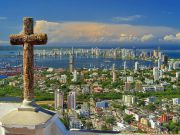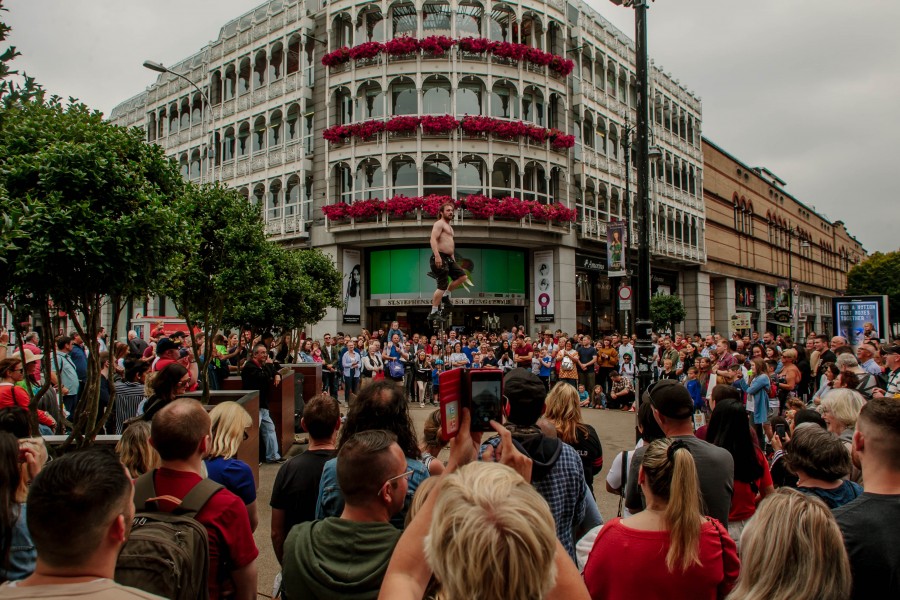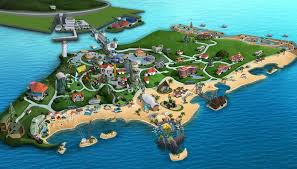CAMBODIA
 A state in Southeast Asia, in the south of the Indochina Peninsula, with the capital Phnom Penh. Area – 181 thousand km². The population is more than 15 million people; over 80% are Khmers. Since 1993 – a constitutional monarchy, the head of state – the king. …. Geographically, Cambodia is located between 10 ° and 16 ° north latitude, 106 ° and 108 ° east longitude. From the south-west it is washed by the waters of the Gulf of Thailand. On the coast are the Samit and Vealren Peninsulas, which are separated by Kampongsaom Bay. Cambodia also includes a small group of islands in the Gulf of Thailand. The largest of which is the island of Kong, with an area of 80 km².
A state in Southeast Asia, in the south of the Indochina Peninsula, with the capital Phnom Penh. Area – 181 thousand km². The population is more than 15 million people; over 80% are Khmers. Since 1993 – a constitutional monarchy, the head of state – the king. …. Geographically, Cambodia is located between 10 ° and 16 ° north latitude, 106 ° and 108 ° east longitude. From the south-west it is washed by the waters of the Gulf of Thailand. On the coast are the Samit and Vealren Peninsulas, which are separated by Kampongsaom Bay. Cambodia also includes a small group of islands in the Gulf of Thailand. The largest of which is the island of Kong, with an area of 80 km².
On the north-east, Cambodia borders on Laos, on the east and south-east on Vietnam, and on the north and north-west on Thailand. The relief of Cambodia is mainly characterized by plains, a considerable part of which is occupied by the lowland Central Plain, spreading to the north-west and south-east East. .. Forests cover almost half of the country. There are two main types of forests: – flooded – these include mangrove forests on the coast of the Gulf of Thailand and forests located around Lake Tonle Sap; upland forests – located in the mountains and on high plains. The monetary unit of Cambodia is the Cambodian riel.
The main part of the population of Cambodia are Khmers living in the valley of the river. Mekong and the south. National minorities, which include immigrants from Vietnam and China, prefer to settle in cities and large villages where they engage in handicraft, are involved in wholesale and retail trade, and sometimes become fishermen or are hired by rubber plantations. In the provinces of Kampong Cham and Kampong Chnang, east of Phnom Penh, Cham are settled, among which farmers predominate. Cambodia’s economy is based on clothing and tourism. In addition to clothing, Cambodia exports timber products, rubber, rice, fish, tobacco, shoes
Waterways have long played a huge role in Cambodia. The Mekong and Tonle Sap rivers, their numerous tributaries and Lake Tonle Sap form a water transport system with a total length of paths of 3,700 km all year round.
CLIMATE AND WEATHER
The climate of Cambodia is determined by three major factors:
firstly, the country is located near the equator within the boundaries of the tropical zone;
secondly, tropical monsoons operate on its territory, determining the presence of dry and wet seasons;
and thirdly, the Kravan Mountains block the path from the coast to the central part of the country, delaying the penetration of wet monsoons onto the central plain.
Throughout all 365 days, the thermometer column is kept at +25 – + 30 ° С. The climate of Cambodia has two climatic seasons:
Winter – held from November to April, which is characterized by the northeast monsoon. The coolest months of December and January fall at this time.
Summer – starting in May and ending in November. It is characterized by the southwestern monsoon blowing from the Indian Ocean. The hottest month is April, with a maximum average air temperature of +37 + 38 ° C. During this period, the rainy season comes to Cambodia.
If we take as a whole, then in the territory of Cambodia about 750-2000 mm of precipitation falls annually. Most of them fall in the Kravan mountains. In the central part of the country they are much smaller, in the Northern Highlands region a little more than on the Central Plain. In Cambodia (usually in mountainous areas), you can meet such predators as: a tiger, a leopard, a Bengal cat (the smallest animal of the cat family). Also, the fauna abounds with wild boars, wild deer, bulls, buffaloes, reptiles and a wide variety of monkeys.
ATTRACTIONS
The main attraction of the country is the temple complex1. Angkor Wat near the city of Siem Reap, in the center of the country. A giant Hindu temple complex in Cambodia dedicated to the god Vishnu. It is one of the largest religious buildings ever created and one of the most important archaeological sites in the world. Built in the first half of the XII century during. There are also places for a “beach” holiday in the south, in the area of Sihanoukville. About 2.5 million tourists visit the country annually. Cambodia is attractive for tourists with the calm and friendly nature of the main population – Khmers, very low prices, climate, exotic cuisine. Some also consider Cambodia as one of the centers of sex tourism. Tourism infrastructure is not as developed as in neighboring Thailand, but is still considered quite satisfactory, especially in Phnom Penh, Siem Reap and Sihanoukville. It is not recommended that travelers deviate from well-traveled tourist routes and populated areas due to the large number of mines left from the time of the Civil War. Other hazards (crime, infectious diseases, snakes) are assessed in the guidebooks as insignificant.




